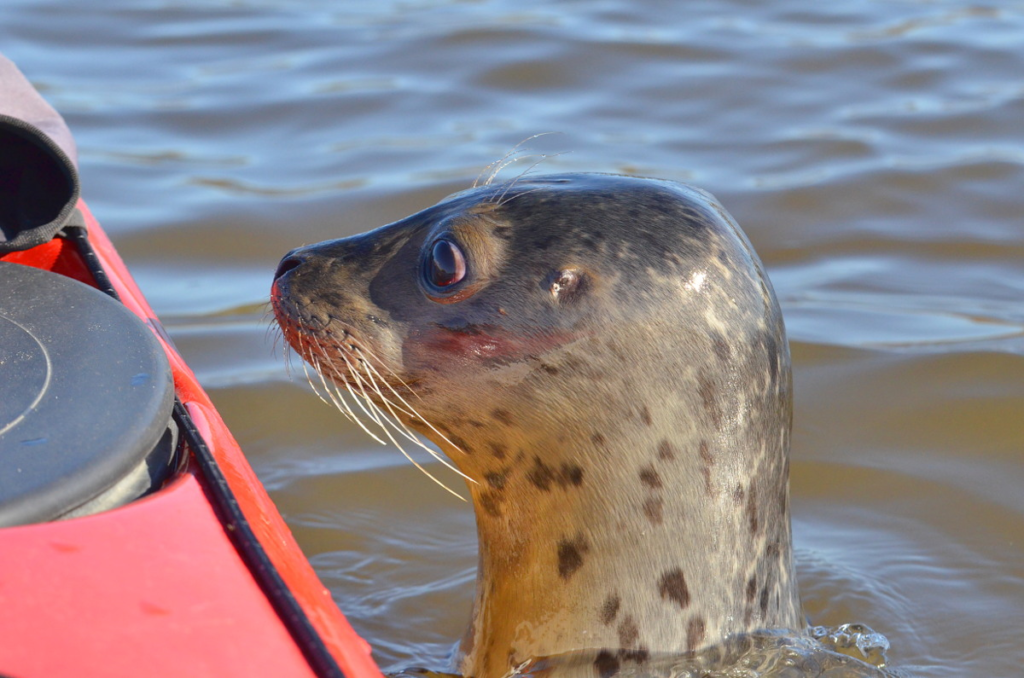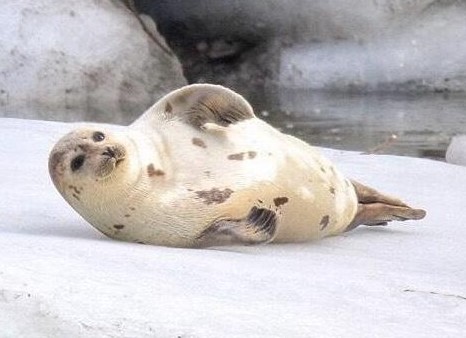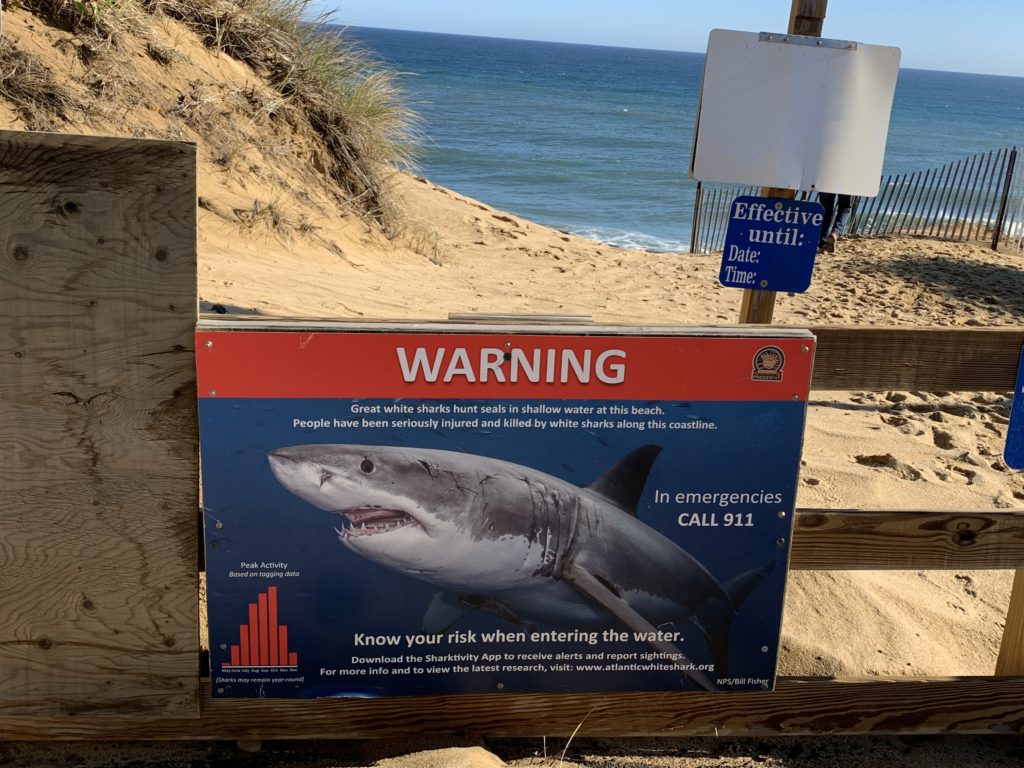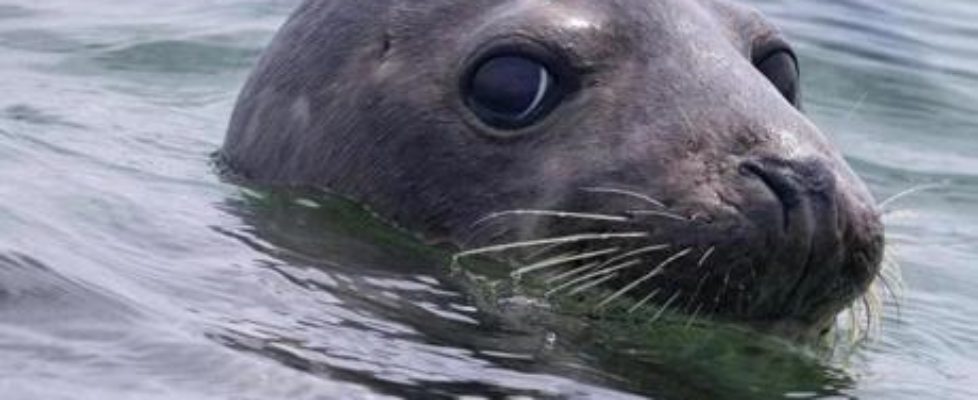The Return of the Seal
A few weeks ago, while scanning for ducks, unusual gulls, and other birds the Verplanck waterfront, a group of birders spotted a large, hump-snouted, definitely non-birdlike head sticking up from the Hudson River’s surface. It was a male Gray Seal, a rare species—even a rare class (Mammalia)—to glimpse in in these waters.
Rare…but not unprecedented. Late fall to early spring is seal season in the Hudson and its tributaries, and over the past few months waterfront observers and lucky kayakers have also spotted the more commonly seen Harbor Seals (a smaller, sleeker relative of the Gray) off Croton, Saugerties, and other locations. In recent years, other seal species, including Hooded and Harp, have also made appearances in the river.
The most remarkable of these sightings involve a Harbor Seal first spotted in the river and nearby Esopus Creek in Saugerties on August 21, 2019. The animal then spent 533 (seemingly contented and healthy) days in the area. It was last reported on January 14, so it may finally have departed, perhaps due to extensive ice floes in the Hudson or the muddy quality of Esopus Creek in this season.

A white tag placed on the seal’s flipper when it was a pup—and reported many times during the animal’s subsequent wanderings—allowed scientists to track its journey. Rescued as an abandoned pup from an island in Maine, the seal was rehabbed by the Mystic Aquarium Animal Rescue Program, tagged, and released off Rhode Island in the spring of 2019.
The young animal then traveled 80 miles up the Connecticut River before encountering an impassible dam, where it reversed course and headed back to the ocean. It eventually ended up in New York Harbor and then the Hudson River estuary. Traveling upriver, it reached Saugerties, where it decided to stick around for a while.
It’s impossible to know for sure if there are more seals in the Hudson now than in years past, but it seems likely. The river is cleaner and fishing regulations are stricter than they have been in decades, making the river a much more welcoming environment for these fish-eaters.
But it’s more than that: The seals that visit the Hudson are also part of a much wider phenomenon taking place all along the coasts of the northeastern U.S. and eastern Canada. Throughout the region, populations of both Gray and Harbor seals are booming, with some breeding colonies growing at an annual rate of twenty percent or more a year.
It’s important to realize that this encouraging trend merely represents seal populations reclaiming what had previously been lost. In historical times Gray Seals were abundant across the North Atlantic, while Harbor Seals—the world’s most widely distributed seal—thrived in northern oceans around North America, Europe, and Asia.
Unfortunately, what happened to these two species during the 19th and first half of the 20th century is a familiar story of human exploitation. In the United States and Canada, they became the targets of intensive hunting for meat, oil, and their skins. They were also culled, supposedly to protect local fishing stocks. (In Massachusetts as late as the 1960s, each seal nose turned in earned its hunter a $5 bounty.)

The consequences of this decades-long persecution were predictable: Seal populations plummeted. By 1970, the region’s entire population of Gray Seals, for example, may have dwindled from as many as 150,000 to as few as 5000 individuals, almost all off Canada. Both species were virtually extinct along the U.S. coast.
In the 1970s, however, a series of laws in the U.S. and Canada granted both seals significant protection, and almost immediately their numbers started to rebound. The increase has been ongoing since then, and today scientists estimate that there are 140,000-150,000 Gray and 70,000-100,000 Harbor Seals off the northeast coast.
Even apart from Hudson River sightings, it’s easy to notice the increase. When I was a kid on Cape Cod, no one ever saw—or expected to see—a seal. These days, however, a quick scan from an ocean beach on the Outer Cape will usually reveal at least one Gray Seal rolling and diving just offshore.
And sometimes far more than that. In winter, my family and I have watched thirty or more Gray Seals congregate close to the beach, seemingly as interested in us as we are in them. (A reliable way of attracting a seal horde: Jump around or dance on the sand, something my own kids enjoyed doing when they were little.)
Along with the animals’ entertainment value and the fulfilling knowledge that we can still coexist with other large mammals, booming seal populations have had more complicated consequences. It all starts with the simple fact that there are a lot more humans around here now than there were the last time seals were so abundant, and thus a far greater demand for the fish that both seals and humans depend on.
With commercial fisheries and the sport-fishing industry both already under pressure, the increasing number of seals has provoked an outcry all up and down the coast. (Gray Seals especially have been known to take big Striped Bass and Bluefish right off lines within full view of the person who’s reeling in a catch…not a behavior designed to win friends.) Despite some scientists’ belief that seals have only a negligible effect on fish stocks, calls for renewed hunts or culls are rising.
Making the issue even knottier is a recent phenomenon that has drawn attention worldwide. Great White Sharks, which feed on seals, have followed Gray Seals close to the shores of Cape Cod, often to within a stone’s throw of the most popular beaches. More than 150 Great Whites were recorded around the Outer Cape in 2019 alone.
Several times in recent years, beachgoers have watched—and filmed—a Great White Shark as it killed a seal in the exact spot where they’d swimming just minutes before. And though attacks on humans are very rare, they aren’t unknown: In September of 2018 a surfer was killed by a shark off a popular Wellfleet beach.

Much of Cape Cod’s economy relies on tourist dollars. While some businesses have embraced the Cape’s new “come see the real-life Jaws!” reputation, most worry about the ultimate fate of a beach resort area where people don’t feel safe going in the water. Alongside calls to kill sharks, the chorus to reduce the population of seals has grown even louder.
So what’s to be done? For now, both seal species remain fully protected and the sharks unmolested. And Cape Cod’s residents and visitors are trying to stay safe through education, signage, aerial surveillance of offshore waters, satellite tagging of sharks, and other methods. (For example, high-tech buoys near some beaches ping a warning when a tagged shark is nearby.)
But the longer-term story remains to be written. Right now, both Harbor and Gray Seals stand as emblems of how, through strong regulation and careful management, we can help wild creatures survive in our increasingly crowded and complicated world. Yet they also illustrate one of myriad challenges we must face in the years to come: Once we’ve allowed a species’ population to recover, what happens to it—and to us—next?
by Joseph Wallace
Copyright © 2021



